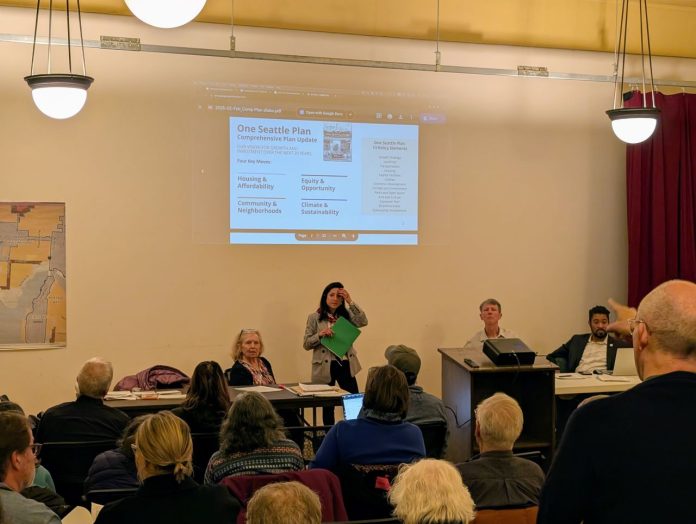
Mayor Harrell proposed 30 neighborhood centers, but opponents are trying to whittle that number down and exclude single family areas.
Councilmember Maritza Rivera and top officials from the Office of Planning and Community Development (OPCD) visited the Wallingford Community Council earlier this month to see what a homeowner-dominated group that has long opposed upzones thought about the Mayor Bruce Harrell’s One Seattle Comprehensive Plan. Spoiler: They hated it. They had concerns. They believe they haven’t been sufficiently consulted.
While the opposition from groups like the Wallingford Community Council is hardly surprising, OPCD leadership did hint that they’re looking at amending the plan to assuage some of their concerns, nonetheless. OPCD Long Range Planning Manager Michael Hubner suggested the City would lessen some apartment zoning near single family homes in reaction to the blowback.
“We have gotten a lot of public feedback — both in the fall and obviously we’re hearing it tonight — is that unhappiness about the proximity of a five-story zone to single family homes,” Hubner said. “We get that. I live in a single family home. I understand that, I really do. And so we’re taking in that comment, and we will be revising some of the maps of the zoning to respond to some of those concerns, maybe to find opportunities to step down from five to four. Or there are other things we might do. We do need more five-story zoning and a lot.”
While a draft of the Comprehensive Plan was finalized in January, formal legislation that actually implements zoning changes has not yet been transmitted to the council. However, a set of legal appeals from neighborhood homeowner groups is threatening to delay Council deliberations and the overall timeline further.
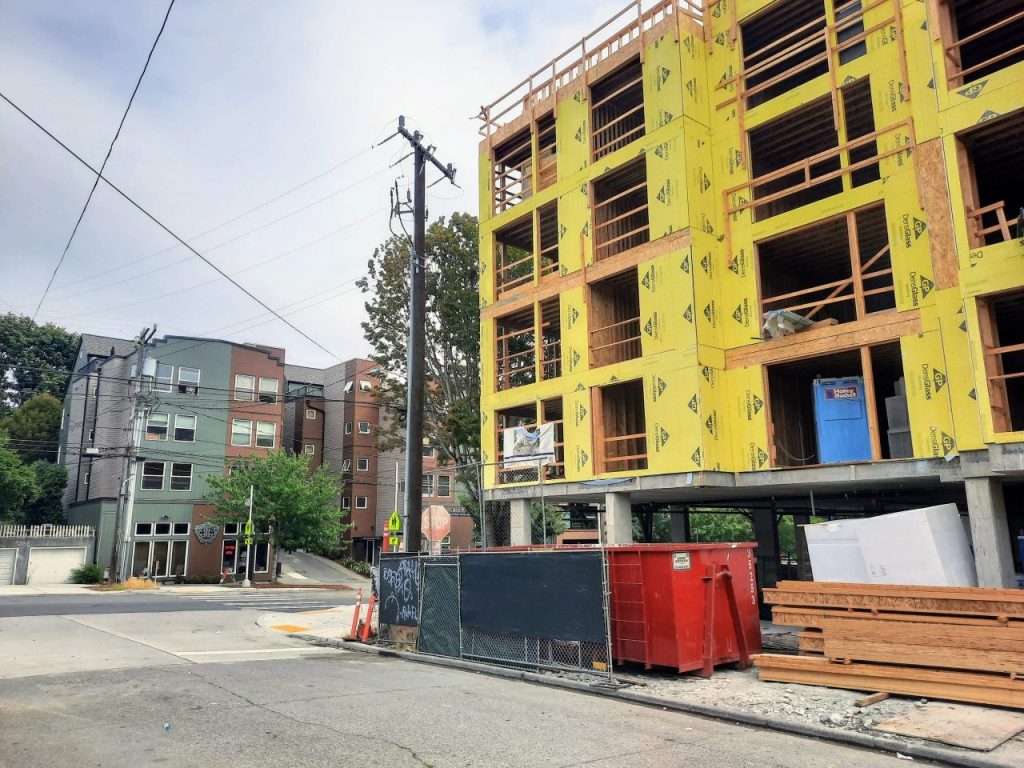
The mayor’s plan would enact a state HB 1110 mandate to replace single family zoning with fourplex zoning — and sixplex zoning near light rail, trolley, and bus rapid transit stops. The proposal would also add a “Neighborhood Center” in North Wallingford (also known as Tangletown) and a narrow transit corridor rezone along Route 62 and routes 31 and 32, which share a route in that area. The 30 proposed neighborhood centers and the skinny transit corridor rezones would add some opportunities for five-story apartment buildings with ground-floor retail or eateries.
Public opinion polling has consistently showed adding denser housing options across neighborhoods is popular with Seattle voters, especially mixed-income midrise social housing. Nonetheless, in a nod to the long traditions of arcane Seattle Process, conventional wisdom appears to hold at Seattle City Hall that really neighborhood councils and homeowner groups are the truest voices in the city, most in need of being heard and catered to.
So far during the council’s early deliberation on the proposed plan, Rivera has complained about a lack of outreach to impacted neighborhoods, and suggested earlier outreach in which apartment-friendly housing abundance plans dominated were invalid or incomplete. District 1 Councilmember Rob Saka has echoed that sentiment.
Homeowners say more apartments would destroy Wallingford
Some Wallingford Community Council members were irate at the group’s February 12 meeting, as District 4 Councilmember Rivera looked on, nodding her head in apparent agreement.
“We got one card in the mail coming through: we’re in the kill zone,” one Wallingford homeowner said. “That’s when we became involved, because that was the first thing we heard about, and it was literally 12 hours before the comment period ended. It was a nightmare.”
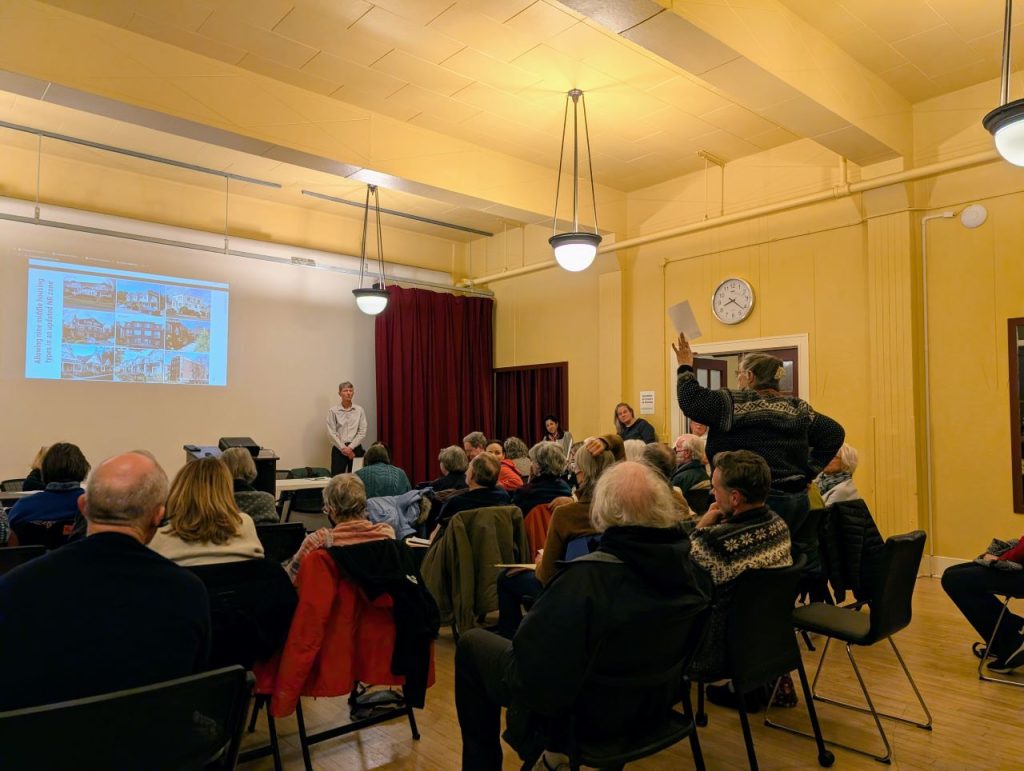
The aggrieved homeowner argued people in apartments and townhomes didn’t deserve to live on her block, and did not appear to rule out arson to keep it that way.
“This is deeply important to this neighborhood, the one house on our block we wanted to burn down when it was being built,” the homeowner from the ‘kill zone’ said. “The people and the developer did not listen to anyone around them, and they built a modern eyesore in a neighborhood where everything around it was 100 years old. I get to look into the face of a building that’s modern and ugly, and they get the joy of looking at my well-maintained, beautifully restored 100-year-old house. That’s not fair.”
Magnolia homeowners push back
Councilmembers Dan Strauss (District 6) and Bob Kettle (District 7) attended the Magnolia Community Council meeting last week. It didn’t turn into quite as much of a rant-fest, but community members shared similar gripes. There, residents raised complaints about the status of a replacement for the Magnolia Bridge, arguing the small amount of upzoning proposed in Magnolia would be untenable without a formal plan for a new bridge. Strauss and Kettle agreed with attendees the City hadn’t done enough outreach and should do more.
"I've got two pages of tweaks that I'm looking at," Dan Strauss just told the Magnolia Community Council when discussing the Comprehensive Plan. But he says that any amendments he's eyeing are all neutral in terms of creating new capacity. "Just saying no doesn't get us where we need to go."
— Ryan Packer (@typewriteralley.bsky.social) February 18, 2025 at 7:56 PM
That said, Strauss told the Magnolia Community Council that any amendments he is eyeing are neutral in terms of creating new capacity, with housing capacity cuts being paired with expansions. “Just saying no doesn’t get us where we need to go,” Strauss told them, noting he has two pages of tweaks that follow that principle. It’s not clear if other councilmembers will follow that same guideline in their districts.
Kettle has maintained he’s an Alternative 5 guy throughout the process. Alternative 5 adds the most housing of the options that OPCD studied. While Kettle has stressed the value of hearing out neighborhood groups and activists, he also reiterated his support for Alternative 5 as the guiding framework in a newsletter shortly after the Magnolia meeting.
“Comprehensive Plan Option 5 incorporates transit-oriented development, neighborhood centers, expanded urban centers, and legalizing a variety of increased housing types in residential neighborhoods. I stand by this,” Kettle wrote. “Like many of you, I have a child who I want to be able to live in Seattle (if she chooses) just as I do now.”
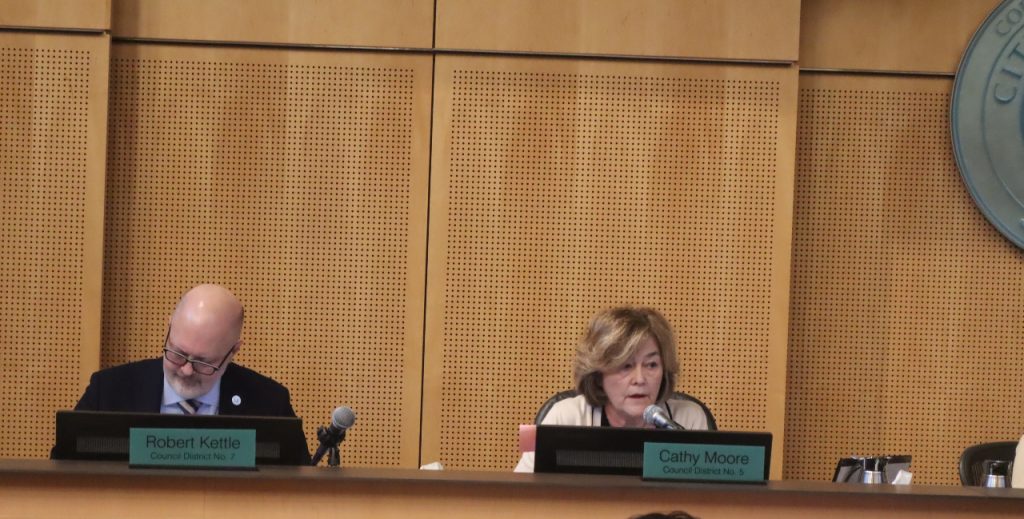
In contrast, Councilmember Cathy Moore, whose District 5 covers the far north of Seattle, has flatly stated her neighborhood of Maple Leaf should not be a neighborhood center or see apartment zoning in a sharp rebuke of the mayor’s plan as it reached the Seattle City Council. Like Kettle, Moore had portrayed herself as a supporter of Alternative 5 on the campaign trail, stating “we need to end exclusionary zoning” at a housing-focused candidate forum. However, she has been more willing to reverse herself, particularly in her own backyard.
“I’m not prepared to sacrifice this particular neighborhood and reason that I live here and support this neighborhood so that we can just throw a bunch of townhouses up that start at $700,000,” Moore said in early January. “We also need to challenge this statement that density is going to produce what people are seeking.”
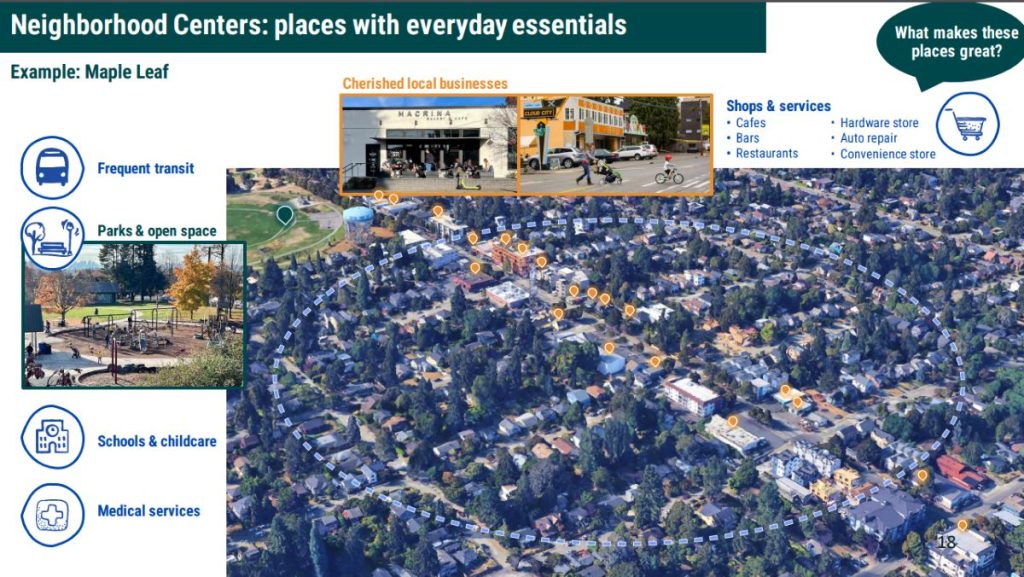
The One Seattle plan focuses on zoning changes outside of the city’s existing urban centers, which have taken more than 85% of the city’s growth over recent decades, despite composing less than 10% of its land. Since Seattle implemented its narrowly focused “Urban Village Strategy” in 1994, Seattle’s urban centers have doubled in population, while its single family zones have been comparatively stagnant and seen their population grow just 9% between 1990 and 2020.
Harrell’s three rezone phases
Facing a deadline to implement the state mandate to allow middle housing in single family rezones, the City has split its zoning plan into multiple phases:
- Phase 1 is HB 1110 middle housing rezones faces a July 1 deadline or the state model code will supersede Seattle’s single family zoning.
- Phase 2 is the neighborhood centers, the new Pinehurst urban center, and transit corridor rezones and carry most of the City’s additional usable housing capacity.
- Phase 3 are the changes within existing urban centers and remain loosely sketched out thus far. As a late addition, they are not in the plan’s Environmental Impact Statement (EIS), so the City will need to produce a supplemental EIS before these can be implemented. This would likely take another year or more to complete.
Much of free-for-all community council meeting was comprised of rants laced with litanies of homeowner complaints. However, as some gripers harped on the City for not incorporating its late addition Phase 3 zoning plans into the Comprehensive Plan and veiling the process in secrecy, OPCD Director Rico Quirindongo shared a rant of his own, repeatedly emphasizing that OPDC wasn’t hiding Phase 3 plans from community groups. OPCD doesn’t have the Phase 3 plan, he said, and waited on the Mayor’s Office to deliver the parameters.
This isn’t the first time that OPCD and the Mayor’s Office have not seen eye-to-eye on the One Seattle plan. Back in 2023, OPCD originally proposed a package with 50 neighborhood centers and broader transit corridor upzones. However, the Mayor’s policy team overruled that plan, and had the agency cut the neighborhood centers in half and shrink the corridor rezones, which delayed release of the proposal — as The Urbanist was first to report after unearthing communications via a public records request.
The Urbanist checked in with Mayor Harrell’s Press Secretary Callie Craighead for the latest on the Phase 3 plan. She didn’t divulge the mayor’s zoning strategy, other than it would focus on frequent transit areas within urban centers.
“The scope of the supplemental EIS will be focused on maximizing the significant investment in light rail stations and bus-rapid transit lines in the City along with other areas already primed for density that were not included in OPCD’s original scoping options,” Craighead said. “While we will begin to focus as soon as possible on this supplemental zoning work, we don’t want it to detract from the conversation at hand and we don’t want it to further delay adoption of the City’s Comprehensive Plan.”
The Mayor’s office prefers a citywide approach that includes the urban centers, which were last upzoned in 2019 (or 2017) with the Mandatory Housing Affordability (MHA) rezones. But it also sounds like the Phase 3 plan will wait until the earlier phases are firmer in hand.
“OPCD’s scoping of options for the major update to the Comprehensive Plan was focused on upzoning areas of the City that have historically been held harmless to zoning changes, including traditional single-family neighborhoods,” Craighead added. “The Mayor’s Office has always believed the omission of the City’s regional and urban centers in the original scope was an oversight. That’s why Mayor Harrell’s 2025-2026 budget included funding for a supplemental EIS to study additional upzones in these areas.”
For now homeowner activists and housing advocates are sparring over fate of Phase 1 and 2 of the One Seattle plan.
Doug Trumm is publisher of The Urbanist. An Urbanist writer since 2015, he dreams of pedestrian streets, bus lanes, and a mass-timber building spree to end our housing crisis. He graduated from the Evans School of Public Policy and Governance at the University of Washington in 2019. He lives in Seattle's Fremont neighborhood and loves to explore the city by foot and by bike.


